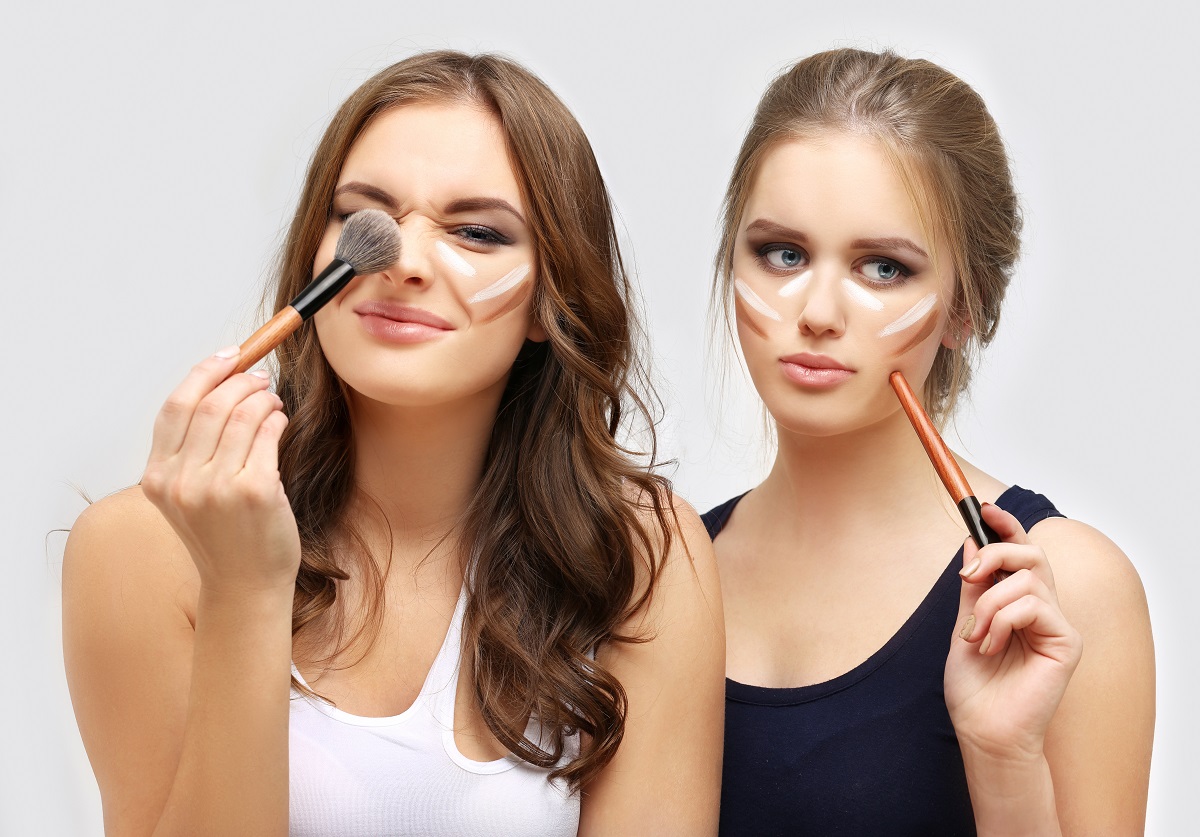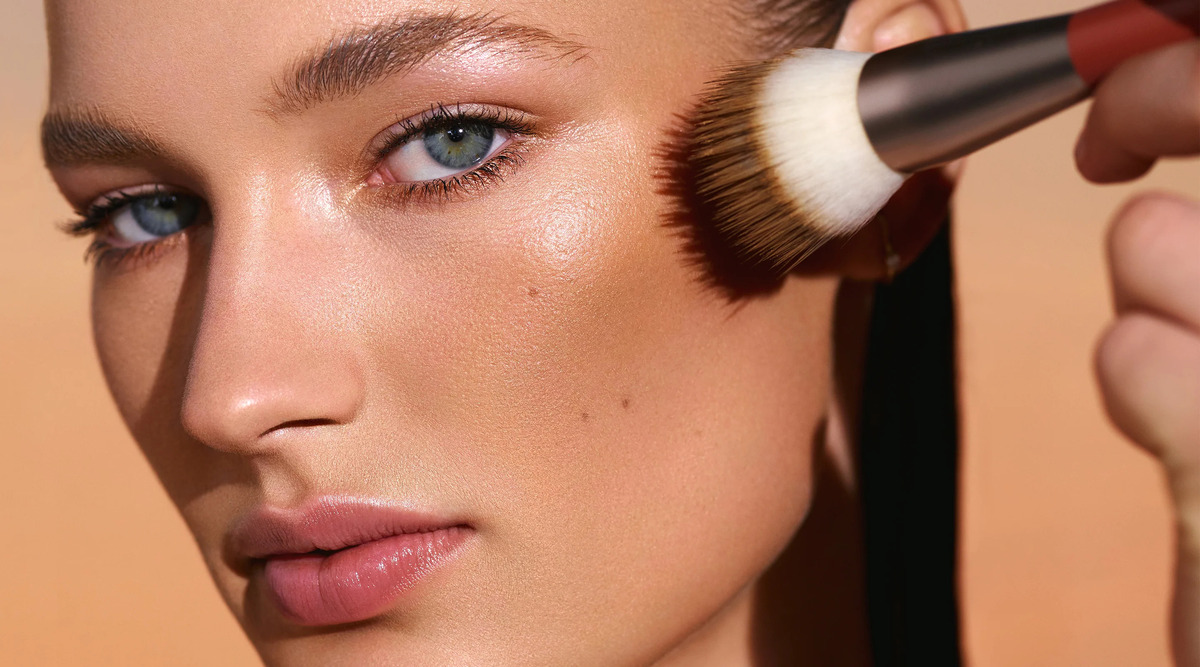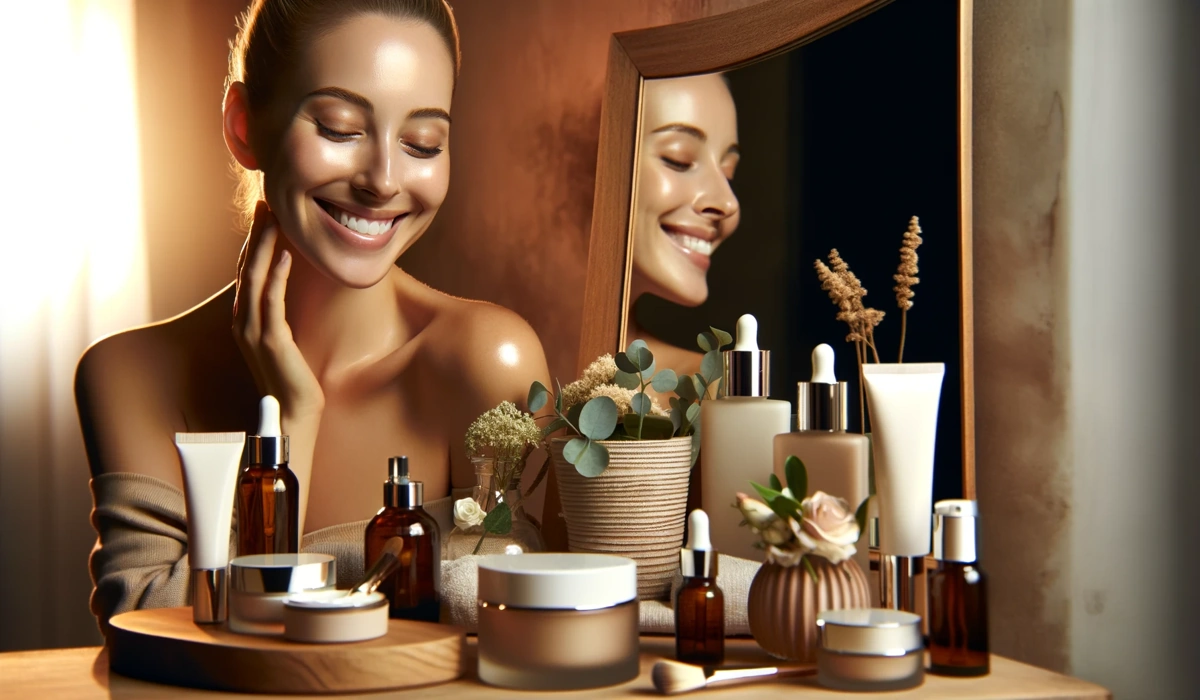In the cosmetic realm, highlighters stand as pivotal enhancers, casting a luminescent aura that subtly alters one’s appearance through precise application. These indispensable tools not only spotlight your most flattering traits but also simulate a sculpted, vigorous allure. Our discourse delves into the enchanting world of highlighters, offering insights and methodologies to imbue your visage with a glow that is both mesmerizing and inherently natural.

Deciphering the Charm of Highlighters
At its essence, highlighting is an art form that accentuates facial regions kissed by natural light, fostering an impression of radiance and elevation. The adept selection of a highlighter can bestow upon your complexion a semblance of dewiness and vitality, rendering it a crucial element in your beautification arsenal. Whether your aim is a whisper of shimmer or a bold radiance, grasping the foundational principles of highlighter application can catapult your cosmetic prowess to unprecedented levels.
Diverse Highlighter Varieties
The spectrum of highlighters is broad, encompassing various textures each suited to specific outcomes and levels of shine.
Powder Highlighters: Ideal for those with oily complexions, they afford a subtle glow that can be intensified as desired.
Cream Highlighters: Meld with the skin for a dewy, ethereal finish, perfect for dry or aging skin types.
Liquid Highlighters: The epitome of versatility, these can be blended with foundation for a comprehensive luminous effect, catering to all skin varieties.
Harmonizing Highlighter with Skin Hue
The selection of a highlighter that synergizes with your skin tone is paramount for a glow that seems to emanate from within.
Pale complexions are complemented by highlighters in pearl or champagne shades. For medium skin tones, peach or gold highlighters impart warmth and vibrance. Deep skin tones are beautifully enhanced with touches of rose gold or bronze. Masterful Application for Radiant Results The secret to an impeccable glow lies in the technique of application. Employ a fan brush to lightly dust powder highlighters, while fingers or a sponge are perfect for the application of cream and liquid forms. Concentrate on the facial high points – the cheekbones, brow arches, nasal bridge, and cupid’s bow.
Highlighting Tailored to Facial Geometry
Adapting your highlighting strategy to your face shape can significantly amplify your features.
Oval Faces: Emphasize the cheek and brow bones to highlight natural contours.
Round Faces: Illuminate the top of the cheekbones and temples to impart definition.
Square Faces: Soften angularity by highlighting above the cheekbones, drawing attention towards the eyes.
Heart-shaped Faces: Draw light to the lower cheekbones and forehead center to harmonize facial proportions.

Expanding Highlighting to Embellish Further
Highlighters transcend facial boundaries, offering enhancements to the eyes, lips, and body.
Eyes: Brighten by applying highlighter to the inner corners and beneath the brow arch.
Cheeks: Elevate cheekbones with a strategic shimmer.
Lips: A touch on the cupid’s bow creates the illusion of fullness.
Adapting Highlighter for Day and Night
Tailor your highlighter application to the occasion – a subdued glow for daywear and intensified luminance for evening elegance.
Innovative Highlighter Tricks for a Bewitching Aura
Incorporate liquid highlighter into your foundation for a radiant complexion, or repurpose powder highlighter as a shimmering eyeshadow for a unified aesthetic.
Securing a Lasting Radiance
Pre-highlighter skincare, focusing on hydration and exfoliation, ensures a seamless application and an inner glow.
The Evolution of Highlighters
Anticipate advancements in the highlighter domain, promising eco-friendliness and a spectrum of shades catering to every skin tone.
Highlighters wield the power to subtly enhance and illuminate your inherent beauty. Armed with the correct products and techniques, alongside a dash of inventiveness, you can master a glow that accentuates your finest features. The essence of mastering highlighter lies in blending and restraint, allowing your natural radiance to shine through.
Selecting the Perfect Highlighter Shade for Your Skin Tone Choosing the right highlighter shade is paramount for attaining a subtle, natural luminescence. Individuals with lighter skin should gravitate towards highlighters with pearl or champagne undertones to illuminate their complexion without overwhelming it. For those with a medium complexion, peach or golden hues can enhance the natural warmth of their skin. Meanwhile, individuals with darker skin may find that rose gold or bronze shades impart a luxurious, radiant glow. It’s essential to consider your skin’s undertones—be it cool, warm, or neutral—to ensure the highlighter seamlessly blends with your natural coloring.
Mastering Highlighter Use on Oily Skin Highlighters can indeed be embraced by those with oily skin without exacerbating shine. Opt for powder-based highlighters, which absorb excess sebum and render a matte effect, and apply these only to the high points of the face you wish to highlight. Steer clear of the T-zone or other oil-prone areas. Employing a mattifying primer or setting powder can further mitigate shine, allowing the highlighter to distinctly shine through in targeted areas.
Navigating the Pitfalls of Excessive Highlighter Application Excessive highlighter application can lead to an unwarranted shiny or artificial look. To avoid this, initiate with a modest amount of highlighter, incrementally building up to the desired level of radiance. Utilizing appropriate tools, such as a fan brush for powders or a dampened beauty sponge for cream or liquid formulas, facilitates precise application. Aim to emulate a natural sheen by concentrating on areas naturally kissed by light, including the cheekbones, brow bones, and nose bridge.
Embracing Highlighter Without Foundation for a Natural Aesthetic Highlighter can certainly be applied on bare skin to achieve a gentle, natural glow that subtly accentuates your features without necessitating a full-coverage foundation. This minimalist approach suits those favoring light makeup or seeking an effortless method to enliven their complexion. Ensure your skin is well-cleansed, hydrated, and primed to enhance the highlighter’s blending ability and durability.
Ensuring Highlighter Durability Throughout the Day To guarantee your highlighter’s longevity, employing a primer as a foundational layer beneath your makeup can be beneficial. This creates a smooth base, enhancing the highlighter’s staying power. After highlighter application (alongside any other makeup), setting everything with a fine, durable setting spray can prevent the highlighter from fading or smudging, ensuring a lasting glow.
Dual-Purposing Highlighter as Eyeshadow for Unified Makeup Harmony Highlighters can also serve as exquisite, shimmering eyeshadows, enriching your makeup with cohesive luminosity. This technique works splendidly with powder highlighters, though cream and liquid versions can be adeptly applied to the eyelids for a radiant effect. Applying highlighter as eyeshadow, particularly on the eyelid and inner eye corners, can brighten and visually enlarge the eyes, ensuring a seamlessly blended, radiant finish.








